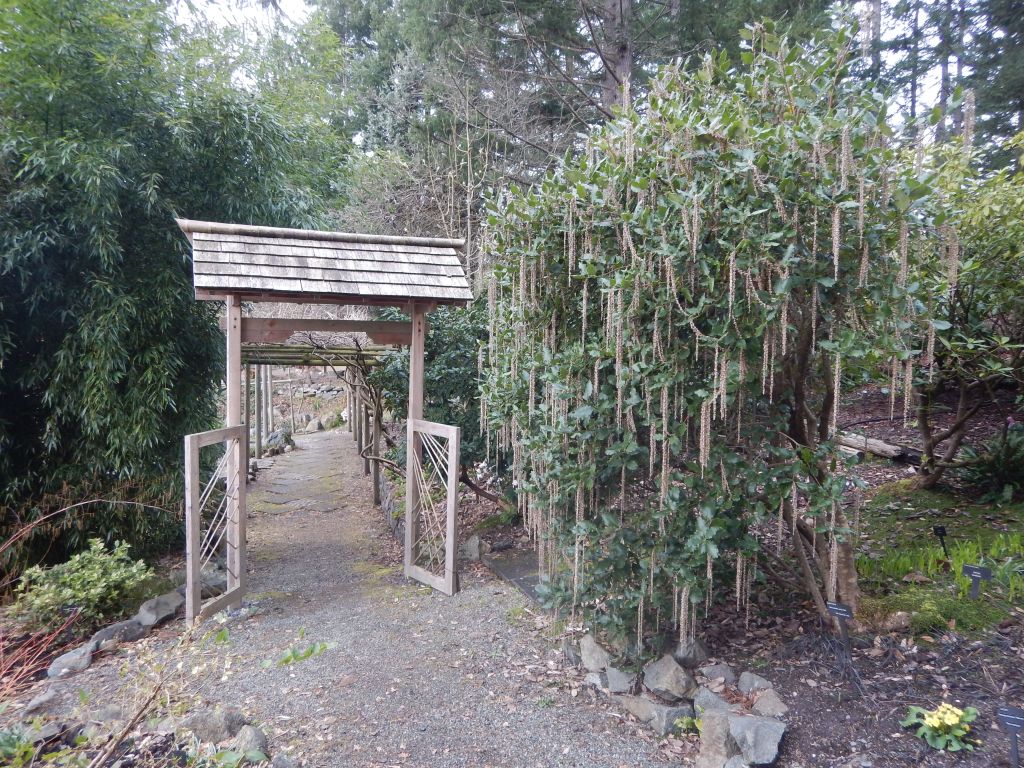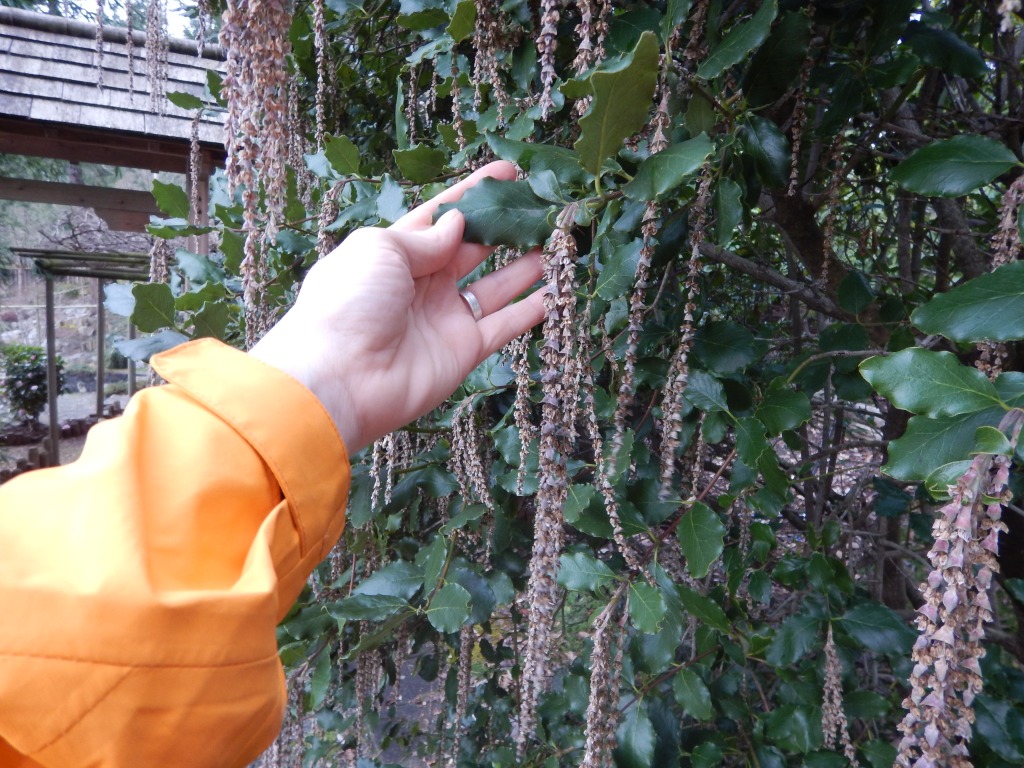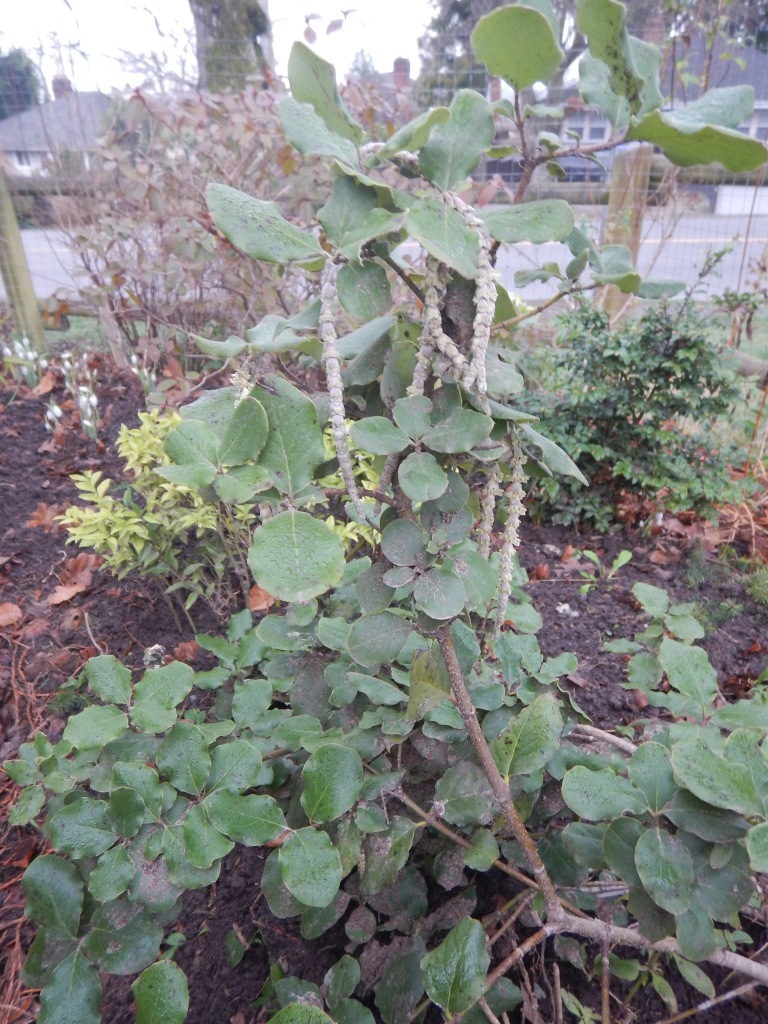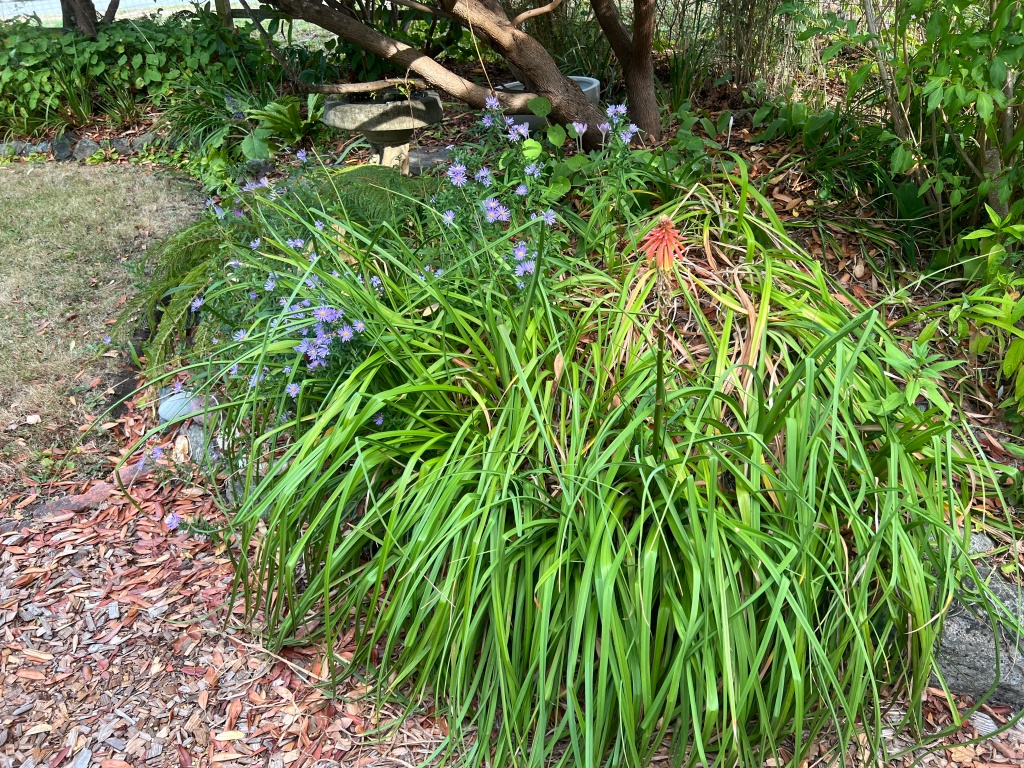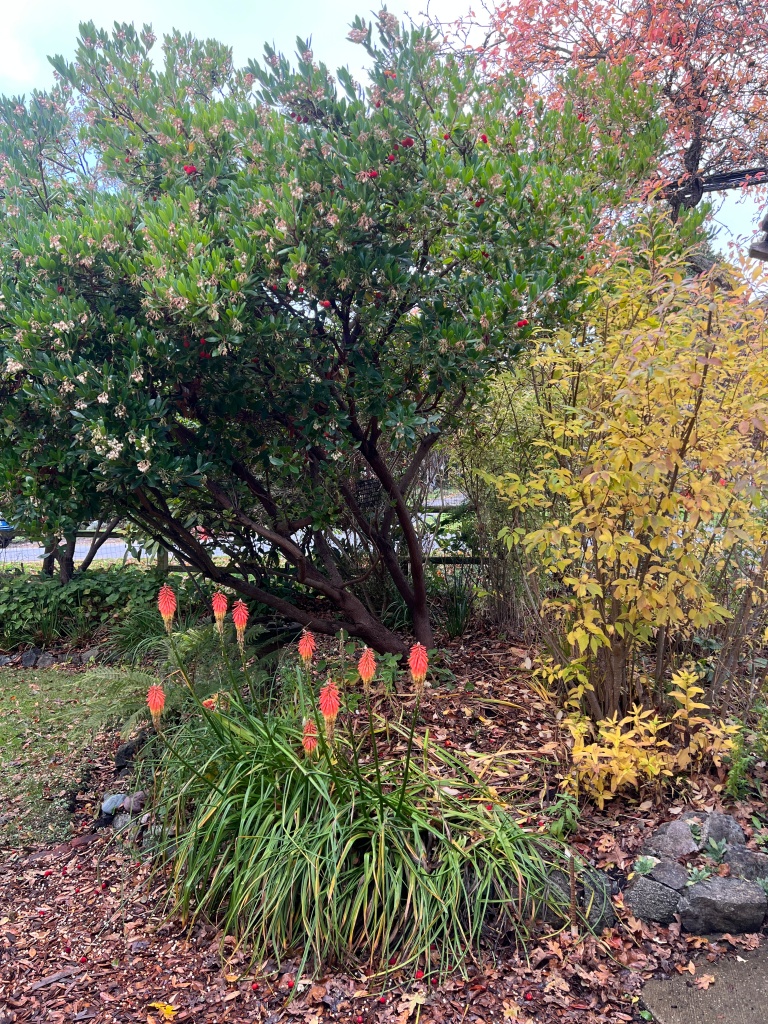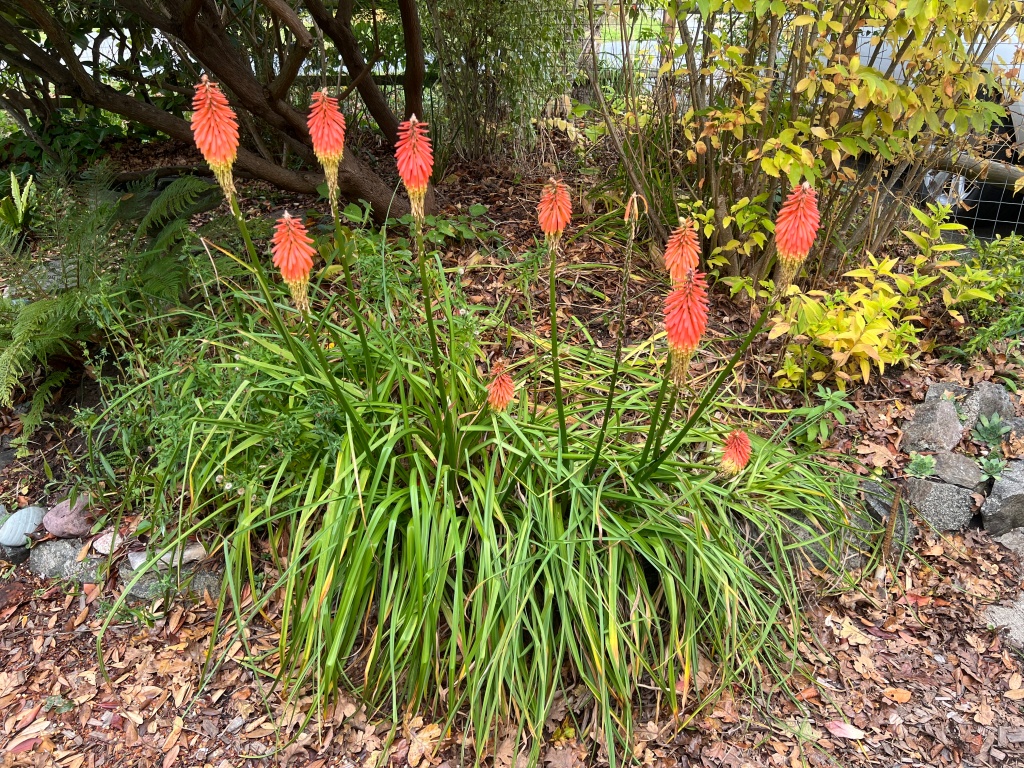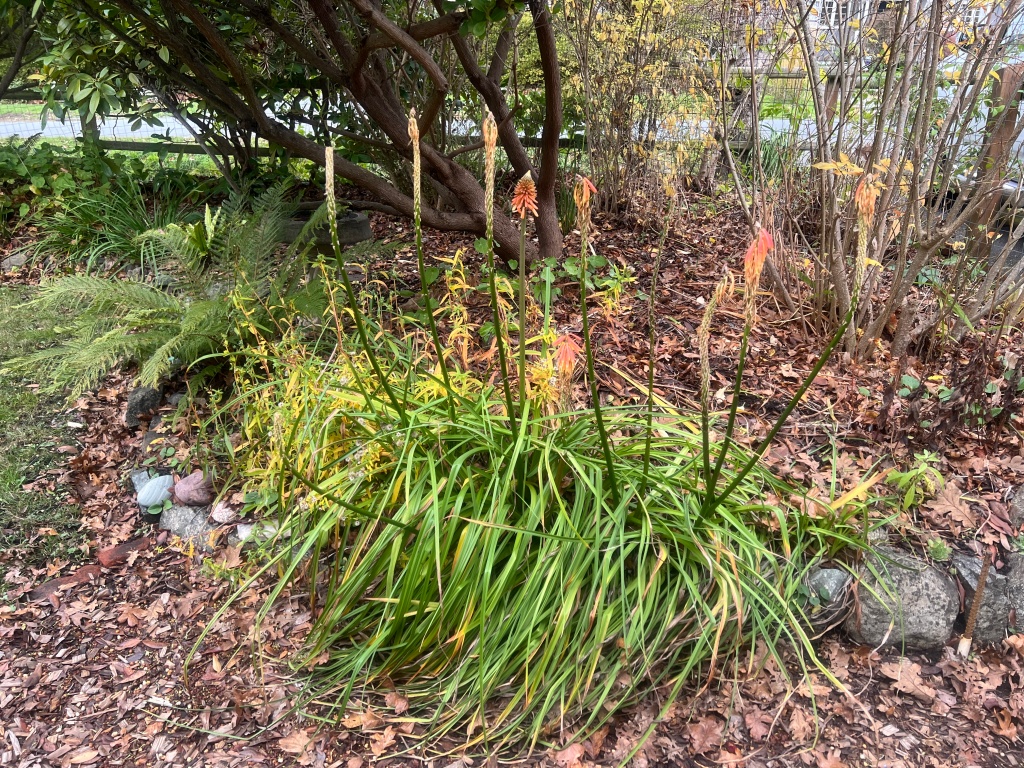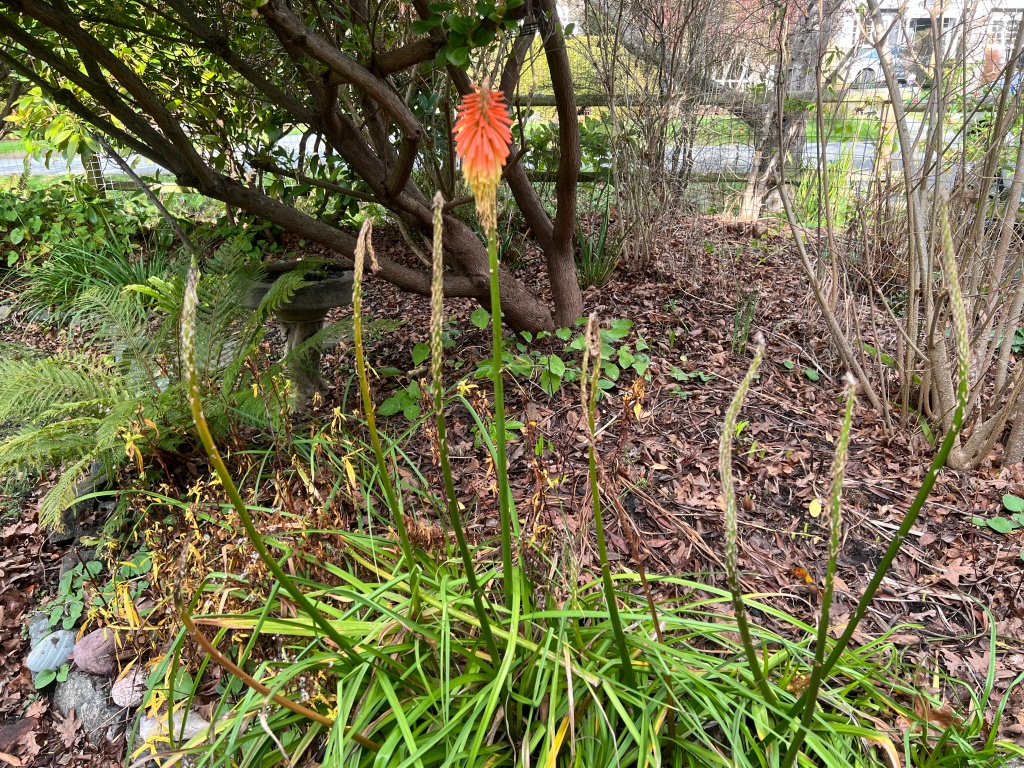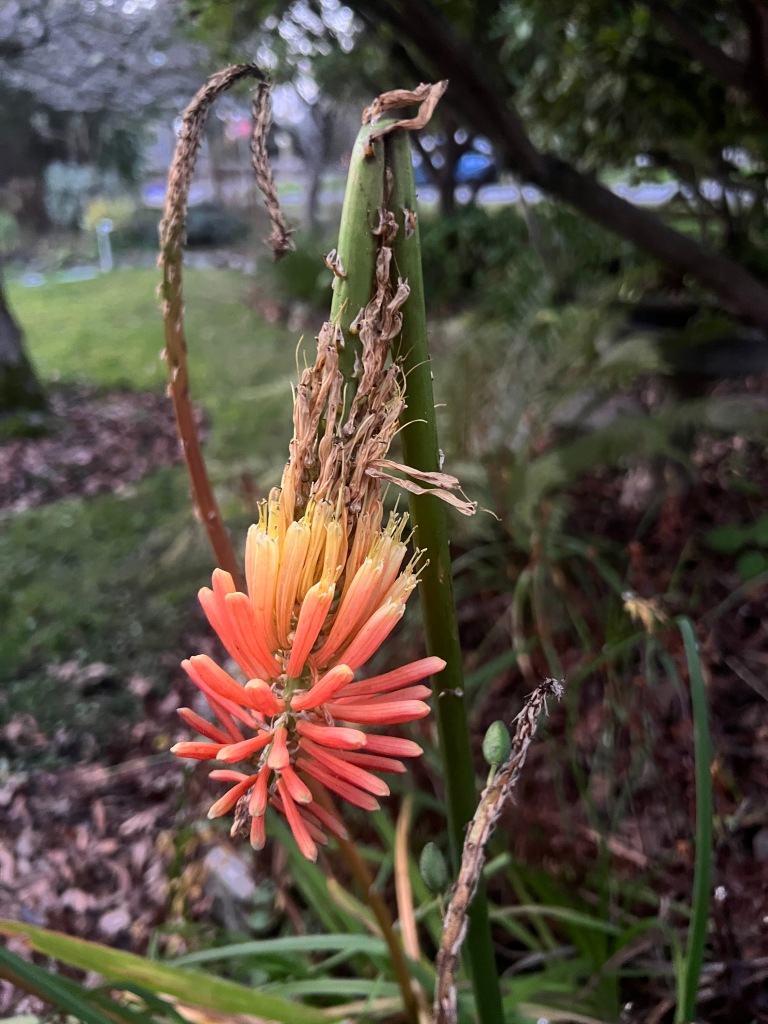There are a few priorities we have for the hedging around our property. I easily get swept up by & fall in love with new, must-have plants. This list reminds me of our conditions… and helps me not waste money by killing off new, unsuitable beauties in our garden.
- 1 –We want some privacy from the busy street corner, so evergreens are a plus.
- 2– A solid wall of green hedging can be tedious. Foliage varieties are more interesting to me.
- 3– A thick telephone cable hangs about 15 feet above our northern border, so we shouldn’t plant anything that interferes with this height restriction.
- 4– The deer graze through our garden a few times daily, so deer resistance is a factor.
- 5– The mini-climate on the southern tip of Vancouver Island is Dry Summers & Wet Winters. Our drainage is pretty good, reducing the wet winter threat. It’s dragging the water hose around all summer that’s more work & expense than I’m up for. Drought tolerance is key.
- 6– Essentially, I’m a lazy gardener, so I prefer low-maintenance choices.
- 7– And, of course, even though I can be led astray by anything decorative, it’s that ‘decorative’ that makes a garden sing. Some seasonal interest is simply an undeniable factor.
A few years ago, in late February, I was exploring the winter garden at the Horticultural Centre of the Pacific. The Garrya elliptica enchanted me. I wanted one of our own. I NEEDED one… BUT I had to check my list of priorities. (Yes, occasionally, gardeners can show willpower against overwhelming plant lust).
So… How does the Silk Tassel Bush stack up?
Pretty good, actually.
- 1 —Evergreen — check
— It is a broadleaf evergreen. Once established, it creates a great background to show off the plants in front of it. - 2– Interesting Foliage — check
— The small, oblong leaves are unusual. They’re shiny & dark green on one side & slightly woolly on the other. The leaf edges are a little bit wavy. They’re different from anything else along our shrub border. That creates interest. - 3– Mature Height under 15 feet — fingers crossed
— The specimen at HCP is about 12 feet tall. Most websites I found call G. elliptica a shrub growing about 6-16 feet tall. Others say it can be a small tree that might interfere with our overhanging wires. We could risk that, right? Besides, I don’t water much, & I reckon this will limit the Tassel Bush from getting too big. - 4– Deer Resistance — fingers crossed
— Credible websites say Wavyleaf Silktassel is deer resistant, but I’ve learned that each herd & situation can change that answer. However, these leaves are tough & leathery, something deer tend to avoid unless they’re super hungry. So it’s worth a chance. - 5– Drought Tolerance — check
— The leaves are also a bit waxy. This hints at its drought tolerance. The Tassel Bush is native to the coastal range of Oregon & California, where it grows in warm, dry conditions. I reckon there’s a good chance this species will naturally migrate north to become native here as our summers get longer & drier. Hopefully, our winters won’t get too much colder — G. elliptica is listed as zone 8, tolerating cold to -23 C (-10 F). - 6– Low-Maintenance — check
— All the websites I researched said ‘low maintenance’… so it must be true, right? I hope so. The 12-foot shrub I admired that January at HCP was at least 3 feet taller by the following October. I suspect the volunteer gardeners there practice a bit of selective pruning to keep it the size they prefer. I’ll likely be OK with a taller shrub, but I’m also up for getting the loppers out if needed. - 7– Seasonal Interest — BINGO!
— The catkins are forming in early autumn. Still, because there’s so much attention on the fall colours, these catkins catch little attention. By January, it’s a whole other story. All winter (and even through April), when there’s little else to marvel over, Garrya elliptica becomes the show. The catkins grow into wonderfully long, striking tassels.
That’s it — Garrya elliptica passes our test.
What else could we want?
The only thing missing is the assurance that Silk Tassel Bush has wildlife value in our area. Usually, it takes eons of co-evolution for these values to develop. I’ve convinced myself that Oregon & California can be considered ‘adjacent’ to our Pacific Northwest. It’s certainly closer than Asia & Europe, where some species we included in our garden originate.
So why not?
We sourced a Garrya elliptica & installed it along our mixed shrub border.
The Garrya we planted has yet to make itself really comfortable & perform to its best. In a few years, it will look more like the specimen at the HCP.
With G. elliptica, each plant is gender specific. A male shrub creates only male flowers. A female creates only female flowers. The male catkins are super long compared to females. I don’t know for sure which gender our shrub is, but I’m happy to see the tassels! Time will tell. Either way, I’m pleased with our decision. 🙂
-30-


